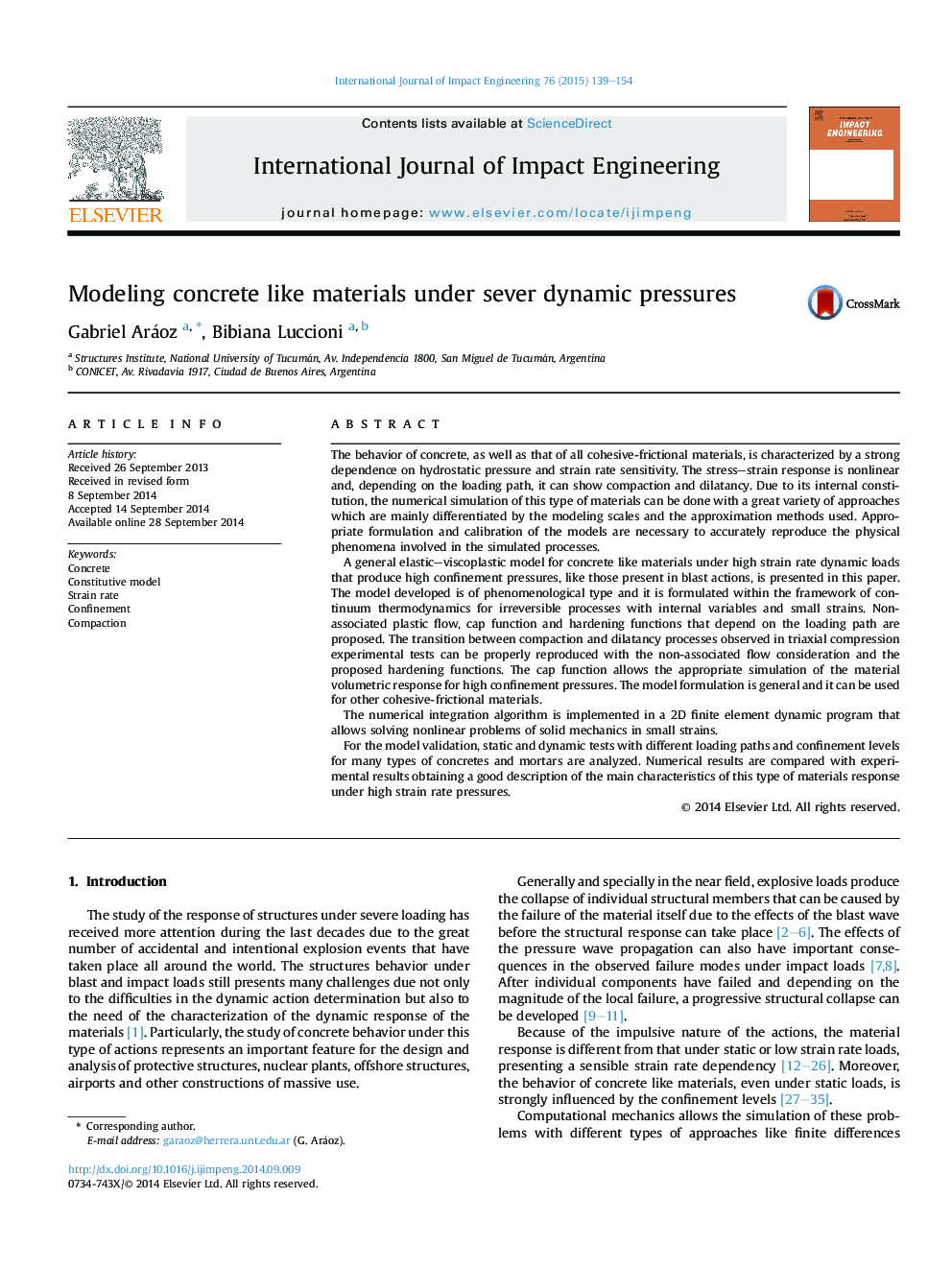| Article ID | Journal | Published Year | Pages | File Type |
|---|---|---|---|---|
| 776461 | International Journal of Impact Engineering | 2015 | 16 Pages |
•A viscoplastic model for concrete under high strain rate loads is presented.•Non-associated plastic flow, cap and hardening path dependent functions are proposed.•Material volumetric response under high confinement pressures is properly simulated.•A good description of the material response under high strain rates is obtained.•The formulation is general and it can be used for other cohesive-frictional materials.
The behavior of concrete, as well as that of all cohesive-frictional materials, is characterized by a strong dependence on hydrostatic pressure and strain rate sensitivity. The stress–strain response is nonlinear and, depending on the loading path, it can show compaction and dilatancy. Due to its internal constitution, the numerical simulation of this type of materials can be done with a great variety of approaches which are mainly differentiated by the modeling scales and the approximation methods used. Appropriate formulation and calibration of the models are necessary to accurately reproduce the physical phenomena involved in the simulated processes.A general elastic–viscoplastic model for concrete like materials under high strain rate dynamic loads that produce high confinement pressures, like those present in blast actions, is presented in this paper. The model developed is of phenomenological type and it is formulated within the framework of continuum thermodynamics for irreversible processes with internal variables and small strains. Non-associated plastic flow, cap function and hardening functions that depend on the loading path are proposed. The transition between compaction and dilatancy processes observed in triaxial compression experimental tests can be properly reproduced with the non-associated flow consideration and the proposed hardening functions. The cap function allows the appropriate simulation of the material volumetric response for high confinement pressures. The model formulation is general and it can be used for other cohesive-frictional materials.The numerical integration algorithm is implemented in a 2D finite element dynamic program that allows solving nonlinear problems of solid mechanics in small strains.For the model validation, static and dynamic tests with different loading paths and confinement levels for many types of concretes and mortars are analyzed. Numerical results are compared with experimental results obtaining a good description of the main characteristics of this type of materials response under high strain rate pressures.
